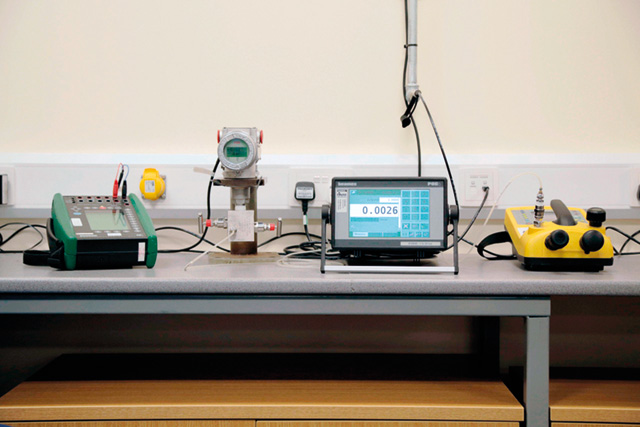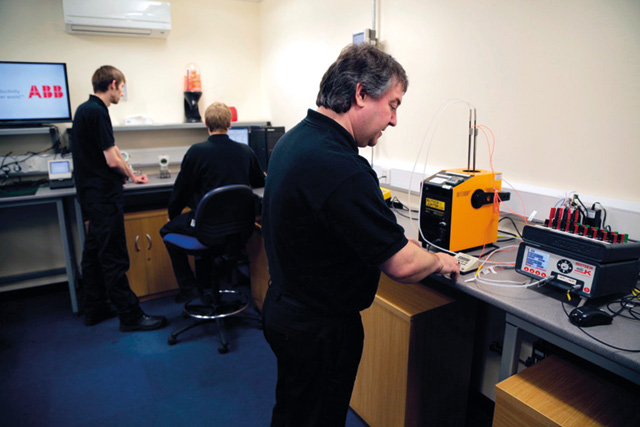
Jon Davison, Product Specialist for pressure and temperature for ABB UK Measurement & Analytics, explains the growing importance of calibration in promoting good practice with measurement and analytics equipment.
The well-worn saying goes, you can’t manage what you can’t measure, so accurate monitoring and control is essential. Properly scheduled and effective calibration ensures that the readings emerging from instrumentation are accurate. Without it, measurements are essentially meaningless.
In some types of instrument, such as pH meters that rely on the sort of wet chemistry that can easily be disturbed, the need for regular calibration is self-evident. But even seemingly robust, solid state sensor elements such as thermocouples rely on electronics to relay their readings to plant control systems and electronic components are subject to ageing from any number of factors, such as mechanical stresses or temperature fluctuations.
The bottom line
Correctly calibrated instrumentation measurements will always have some impact to the bottom line, however, the impact varies depending on the business. While flow meters carrying out fiscal measurements on petroleum products may need to be accurate to ±0.025%, a meter controlling the level in a water tank used for washing down machinery may only need to achieve ±10%.
The ultimate goal of instrument calibration might be increased production yields, reduced product give-away and over-charges, more consistent product quality and/or reduced product liability. It’s about optimising the process to generate the most income from the available assets, whatever your business.
Legislative pressure
Alongside process optimisation there is growing pressure for more measurement accuracy emerging from the legislative arena too. Environmental Permitting Regulations (EPR) regulate companies in the process and water industries and require them to maintain effective monitoring of their emissions to air and water.
Increasingly, EPR compliance requires plant operators to use monitoring equipment that has been officially approved under the MCERTS scheme and ensure regular calibration.

When should you calibrate?
As a guide, instruments should be calibrated when they are first installed, as per manufacturer guidelines, when a physical shock or vibration could cause damage, following severe weather or sudden changes in weather, or when the output seems doubtful.
The calibration frequency will also depend on how critical it is to the process. In safety critical applications, companies may need to have their pressure transmitters checked every 12 months in a SIL1 application or every three months in a SIL3 application, this frequency is determined by the target reliability required.
Finding the calibration frequency that works for your business
When calculating calibration frequency, this five-stage process designed for pressure transmitters is a useful guide:
1. Determine the performance required for the application
Some applications have a direct bearing on safety or plant efficiency and therefore accurate readings in the order of 0.5 % of span or less. This will normally increase the required calibration frequency. If all that is needed is to indicate a performance figure of 10% of span, the device need never be calibrated at all.
2. Determine the operating conditions
Operating conditions such as static pressure, the ambient temperature and vibrations are another vital aspect. These conditions will each have an associated error figure.
3. Calculate the TPE (Total Probable Error)
This is determined by a formula which incorporates terms for the quoted base accuracy of the device and the likely effects of static pressure and temperature errors on performance accuracy.
4. Determine the stability for a month
This data should be provided by the vendor. Normally the stability will be expressed for a given time period e.g. 36 months.
5. Calculate the calibration frequency
The calibration frequency is given by desired performance minus the Total Probable Error, divided by the stability per month. This determines the frequency with which the calibration needs to be checked in order to maintain the desired accuracy.
Who can help?
It’s advisable to stick to using accredited calibration services. In Britain calibration services are accredited by The United Kingdom Accreditation Service (UKAS) and is the sole accreditation body recognised by government to assess, against internationally agree standards.
www.abb.com/measurement | enquiries.mp.uk@gb.abb.com | t: 0870 600 6122 Ref: pressure transmitter calibration

